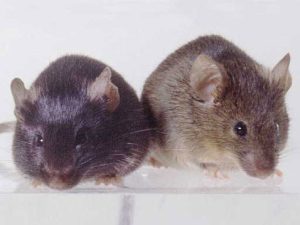Dr. Joey Tang, DVM
What is feline Panleukopenia?
Feline panleukopenia is a contagious, and potentially life-threatening viral infection in cats caused by the Feline Panleukopenia Virus (FPV). This virus is transmitted between cats via bodily fluid, including feces, urine, saliva, and nasal discharge. However, it can also be carried to other cats via inorganic vectors (such as clothing, bedding, etc.). Although it is extremely infectious between cats, this virus is limited to cats only and cannot infect other species, such as humans and dogs.
Once the virus enters a cat’s body, it typically targets the bone marrow and the GI system of the animal. When the virus infects the bone marrow, it affects the production of the white blood cells (immune cells of the body), leading to a decrease in the total number of white blood cells within the body. Due to this, the body’s immune system is weakened and becomes more susceptible to other infections. In the GI system, the virus causes destruction to the inner lining of the GI tract, typically leading to diarrhea.
Which cats are at risk?
The Feline Panleukopenia Virus (FPV) is quite common in our environment and therefore most cats are exposed to the virus to some extent during their lifespan. However, because of the existence of a highly effective vaccine, infection and clinical disease tend to be limited to unvaccinated cats (especially kittens), barn/feral cats, and occasionally shelters.
Symptoms of Panleukopenia
The most common clinical signs associated with Feline Panleukopenia are:
Diarrhea
Loss of appetite
Lethargy
Potential for fever and vomiting to develop
If a pregnant mother cat becomes infected with FPV during pregnancy, it is possible for the virus to infect the fetuses and cause cerebellar hypoplasia. These kittens will be born with underdeveloped cerebellums, which then lead to tremoring during purposeful movement. Kittens with cerebellar hypoplasia are considered to have a good quality of life; however, they will have abnormal/wobbly gaits for the rest of their lives.
Treatment of Panleukopenia
Unfortunately, there is no current cure or direct treatment for this viral disease. Therefore, treatment is aimed towards supportive care and treatment of secondary infections. This typically includes antibiotics for potential secondary bacterial infections, fluid therapy to aid with dehydration, and potentially other medications to help with the clinical signs.
A cat that has undergone treatment and recovered can still potentially shed the virus for up to another six weeks.
Prevention
Although there isn’t a treatment for this virus, there is a very effective vaccine available. This vaccination is considered as a core vaccine for every cat and is typically recommended during kittenhood, every three to four weeks from six weeks old to about 16 weeks, and throughout adult life.
If this information was helpful, please help us continue to educate about pet health and well-being by making a donation. As a registered charity that does not receive annual government funding, the Ontario SPCA depends on the generosity of donors to change the lives of animals in need.
The post What is Panleukopenia and why should I be aware of it for my cat? appeared first on Ontario SPCA and Humane Society.
Leave a comment



